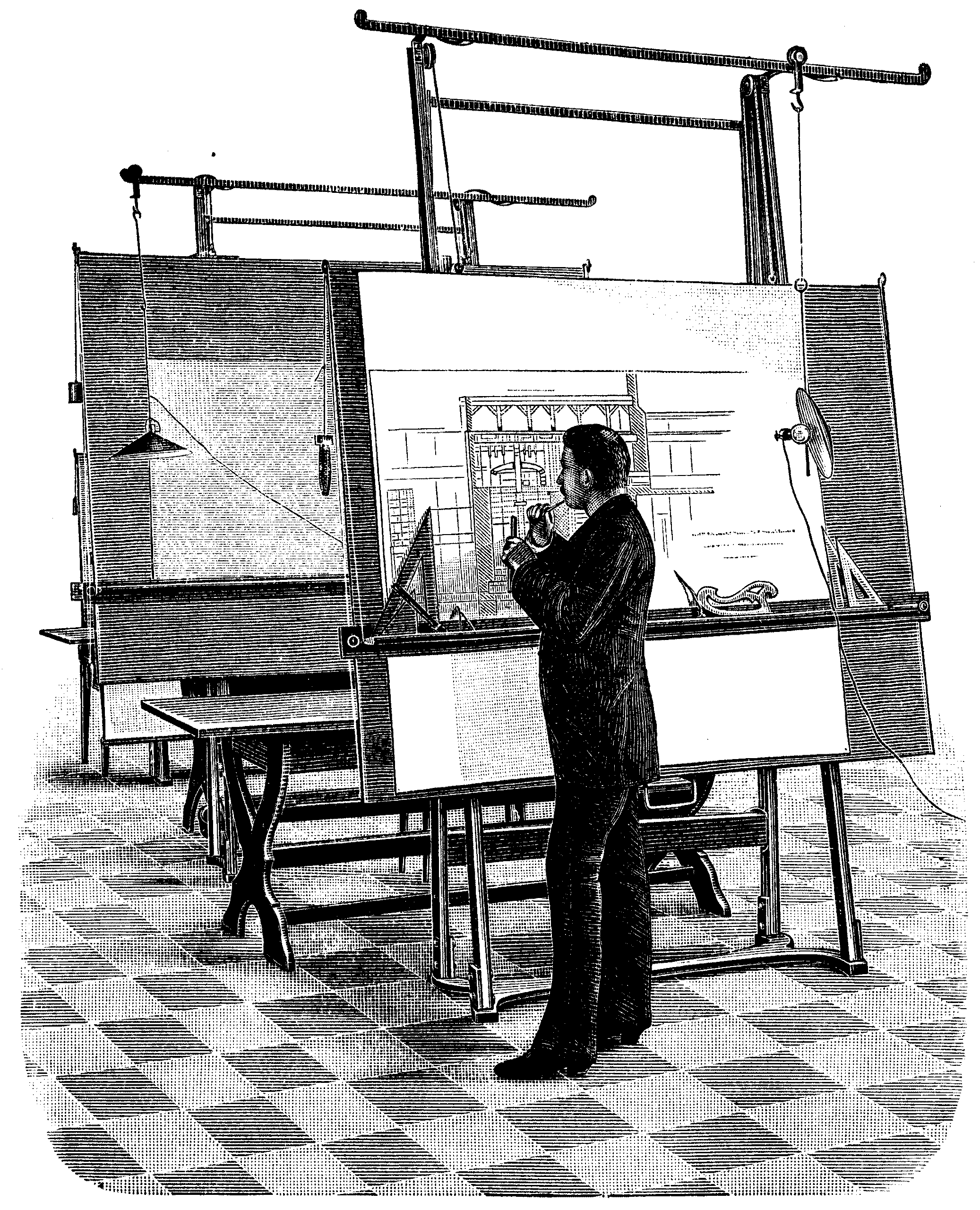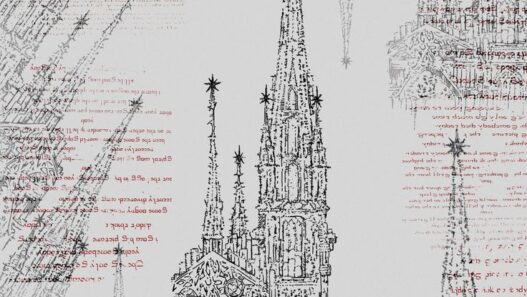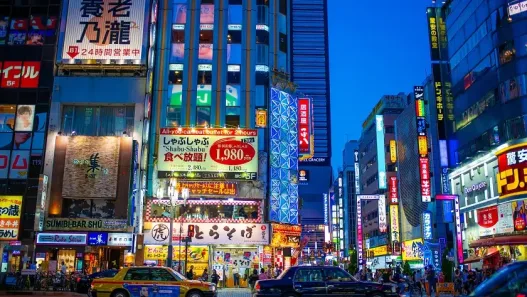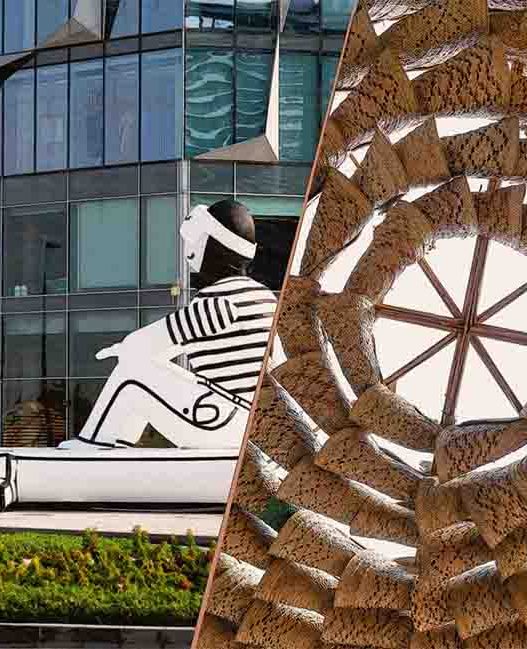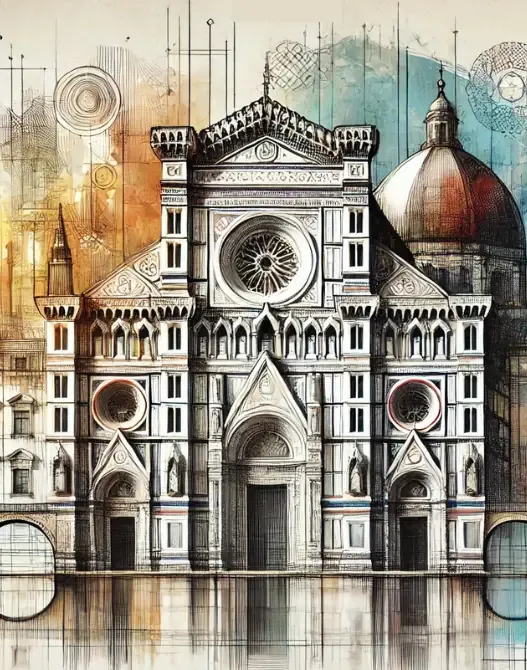A bustling metropolis, Tokyo is a city where old and new coexist in a vibrant tapestry of life. Its architectural landscape is a testament to centuries of history, cultural evolution and technological innovation. Walking the streets, you realize that each building tells a story: resilience in the face of natural disasters, economic boom and a society that values both heritage and progress.
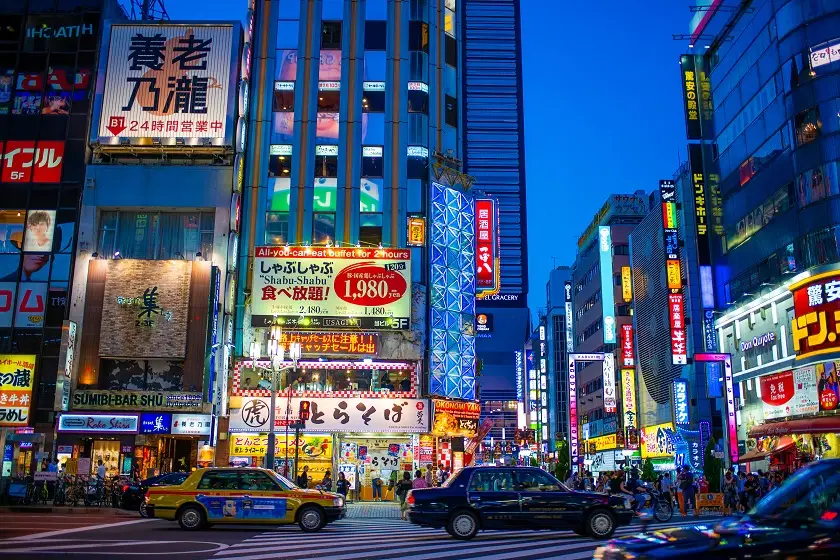
Overview of Tokyo’s History
Tokyo’s history dates back to the 12th century, when it was a small fishing village known as Edo. Over the centuries it developed into a bustling city, especially after it became the political center of Japan in the early 17th century. The Edo period marked the beginning of significant urban development with the construction of samurai residences and merchant districts. However, following the Meiji Restoration in the late 19th century, the city’s architectural identity changed dramatically, paving the way for Western influences and modernization.
Throughout the 20th century, Tokyo experienced rapid growth and faced numerous challenges, including devastating earthquakes and the Second World War. Each of these events shaped the city’s skyline and architectural styles. While post-war reconstruction saw the emergence of innovative designs, the 21st century brought a focus on sustainability and smart urban planning. Today, Tokyo stands as a testament to resilience and adaptability, with a rich historical narrative that continues to influence its architectural landscape.
The Importance of Architecture in Tokyo
Architecture in Tokyo is not just aesthetic; it reflects the city’s cultural values, technological advances and social dynamics. Every building serves a purpose, whether it is a temple honoring Shinto traditions or a skyscraper standing as a symbol of economic power. The importance of architecture lies in its ability to reflect the spirit of its time, acting as a canvas where history, culture and innovation intersect.
From the iconic Tokyo Tower, which resembles the Eiffel Tower and symbolizes post-war recovery, to the serene Meiji Shrine, which represents the essence of Japan’s spiritual heritage, each building contributes to the city’s unique identity. Moreover, the design of public spaces such as parks and plazas encourages social interaction, making architecture a vital element in enhancing the quality of urban life.
A Blend of Tradition and Modernity
One of the most fascinating aspects of Tokyo’s architectural landscape is the seamless blending of tradition and modernity. The juxtaposition of ancient temples with sleek, contemporary skyscrapers creates a dynamic urban environment. For example, the historic Senso-ji Temple in Asakusa, with its traditional pagoda and lively market streets, coexists with the futuristic Tokyo Skytree, Japan’s tallest structure.
This combination invites exploration and contemplation. Visitors can experience the serenity of traditional gardens while interacting with cutting-edge design in the shopping districts. This balance emphasizes the Japanese approach to architecture, where innovation does not erase the past, but rather enhances it and creates a dialogue between different eras. It shows a cultural respect for history while embracing the possibilities of the future.
The Impact of Technology on Urban Design
As a global leader in technology, Tokyo has embraced urban design innovations that are redefining how cities function. From intelligent transportation systems to eco-friendly buildings, technology plays a critical role in shaping the urban experience. The integration of digital technologies into architecture increases connectivity and efficiency, making it easier for residents and visitors to navigate the city.
Buildings such as the Mori Tower in Roppongi Hills exemplify this trend, with advanced energy management systems and smart interiors. The city is also investing in sustainable practices such as green roofs and urban agriculture, reflecting a commitment to environmental stewardship. As Tokyo continues to develop, the impact of technology will be crucial in addressing challenges related to urban density, climate change and quality of life.
Goals of this Blog Post
This blog post aims to provide a comprehensive review of Tokyo’s architectural landscape, highlighting its rich history, significance and harmonious blend of tradition and modernity. By exploring these themes, readers will gain a deeper appreciation of how architecture shapes the city’s identity and influences everyday life. The aim is to spark curiosity about Tokyo’s unique architectural journey and encourage readers to reflect on the wider implications of urban design in their own communities. Whether you are an experienced architect or a curious traveler, understanding Tokyo’s architecture opens a window into the soul of this extraordinary city.
Tokyo, Japan’s vibrant capital, is a city where ancient traditions coexist harmoniously with cutting-edge modernity. This unique blend is reflected in its architecture, which tells a story of resilience, innovation and cultural evolution. We will explore the historical influences on Tokyo’s architecture, revealing how different eras shaped the city’s skyline and character.
Historical Influences on Tokyo’s Architecture
Tokyo’s architectural landscape is like a tapestry woven from its rich history. Each historical period has left an indelible mark, creating a city that respects its past while looking to the future. From the wooden structures of the Edo period to the steel and glass buildings of today, Tokyo’s architecture reflects a dynamic narrative of change and adaptation.
Edo Period Architecture
The Edo period, which lasted until 1868, marks an important chapter in Tokyo’s architectural history. During this period, known as Edo, the city transformed into a vibrant urban center. The architecture of this period is characterized by wooden structures, thatched roofs and intricate details.
Traditional houses, known as mukōzuke*, featured sliding doors, tatami mat flooring and open spaces that emphasized harmony with nature. Gardens were an important element of tranquility in the midst of urban life. Famous Shinto shrines and Buddhist temples, such as Senso-ji Temple, were also built during this period, displaying elaborate woodwork and spiritual significance.
These architectural styles not only provided functional living spaces, but also reflected the social hierarchy and cultural practices of the time. Even today, remnants of Edo architecture can be seen in neighborhoods like Yanaka, where traditional wooden buildings stand as a testament to the city’s historical roots.
Western Influence in the Meiji Era
The Meiji Restoration marked Japan’s rapid modernization and opening to Western influences. This transformation significantly influenced Tokyo’s architecture, and the city began to adopt new styles and technologies. European architectural elements were incorporated into various buildings, leading to a fusion of Western and traditional Japanese design.
During this period, brick and stone structures began to replace wooden buildings, and important examples such as Tokyo Station and the National Diet Building showcased Western neoclassical and Renaissance styles. This architectural change symbolized Japan’s ambition to assert itself on the global stage while maintaining its distinctive cultural identity. The introduction of Western-style civil buildings and schools also encouraged a new architectural language reflecting progress and modernity.
Post-War Reconstruction and Growth
The devastation of the Second World War left Tokyo in ruins, but the tragedy also sparked a remarkable wave of reconstruction and growth. The urgent need for housing and infrastructure in the post-war period led to innovative architectural solutions.
Architects such as Kenzo Tange emerged, blending modernist principles with traditional Japanese aesthetics. Buildings such as the Hiroshima Peace Memorial Museum exemplify this synthesis, where concrete structures resonate with a sense of historical significance. Rapid economic growth in the 1960s further fueled urban development, resulting in a skyline filled with high-rise buildings and commercial complexes.
This period of reconstruction not only transformed Tokyo’s physical environment, but also reshaped its social fabric. The city has transformed into a global metropolis, balancing the needs of its inhabitants with the demands of modern life.
Contemporary Trends in Historic Preservation
As Tokyo continues to develop, there is a growing awareness of the importance of preserving its historic architecture. Contemporary trends emphasize the need to strike a balance between modernization and heritage preservation.
Architects and urban planners are increasingly adopting strategies that integrate old and new. Historic buildings are often repurposed for modern uses, keeping the stories they tell alive. A prime example is the transformation of the former Tsukiji fish market into a vibrant marketplace that meets contemporary needs while retaining its historic charm.
This approach not only preserves architectural heritage, but also promotes a sense of identity and continuity in a rapidly changing urban landscape. The dialog between past and present is the hallmark of Tokyo’s ongoing architectural narrative.
Iconic Historic Buildings in Tokyo
Tokyo is home to many iconic buildings that embody its architectural heritage. The Imperial Palace, with its tranquil gardens and traditional buildings, serves as a historic anchor in the middle of the bustling city. The Tokyo Tower, modeled after the Eiffel Tower, stands as a symbol of post-war resilience and modernization.
Other notable examples include the National Museum of Western Art, which displays European art in a beautifully designed modernist building, and the Nezu Museum, which blends contemporary architecture with traditional Japanese gardens. Each of these buildings tells a story, bridging history and the future.
As a result, Tokyo’s architecture is a fascinating reflection of its historical influences, showcasing a journey from the Edo period to Western modernization and contemporary preservation efforts. This dynamic interplay between tradition and innovation makes Tokyo not just a city of skyscrapers, but a living museum of architectural evolution.
A vibrant metropolis, Tokyo is a remarkable blend of ancient traditions and cutting-edge modernity. As the capital of Japan, it is a testament to human ingenuity and adaptability. The city’s skyline is adorned with a variety of architectural styles that showcase its journey through time while embracing futuristic visions. In this survey, we examine some of Tokyo’s modern architectural landmarks, each representing unique concepts and embodying the spirit of innovation.
Modern Architectural Landmarks
Tokyo’s modern architectural landmarks are not just buildings; they are symbols of the city’s evolution and aspirations. Each structure tells a story and serves a purpose, reflecting the dynamic nature of urban life. From soaring skyscrapers to avant-garde museums, these landmarks are focal points that attract locals and tourists alike.
Tokyo Skytree: A Symbol of Modernity
Towering majestically meters above the city, Tokyo Skytree is the tallest structure in Japan and the second tallest in the world. Completed in 2012, this broadcast and observation tower is a marvel of engineering and design. Its sleek, futuristic silhouette is inspired by traditional Japanese pagodas, symbolizing the fusion of past and present.
Skytree is not just an architectural achievement; it serves as a major hub for broadcasting and telecommunications, enhancing connectivity in an ever-evolving urban landscape. Visitors flock to the observation decks for breathtaking panoramic views of Tokyo and beyond, admiring the vast metropolis stretching to the horizon. The surrounding area, known as Solamachi, adds to the experience with its shops, restaurants and cultural attractions, making Skytree a vibrant place for everyone.
National Center for the Arts: A Unique Concept
Unlike traditional museums that house permanent collections, the National Art Center in Tokyo is a pioneering institution dedicated to showcasing temporary exhibitions. Opened in 2007, the center’s architectural design by renowned architect Kisho Kurokawa is as striking as the artworks on display. The building features an undulating glass façade that allows natural light to flood the galleries, creating a harmonious atmosphere for the appreciation of art.
This unique approach to art curation allows for a wide range of exhibitions, from contemporary art to historical retrospectives. The Center is a cultural hub that encourages dialogue and interaction with art, attracting visitors from diverse backgrounds. Its innovative design and concept reflect Tokyo’s commitment to promoting creativity and cultural exchange.
Shibuya Scramble Square: An Activity Center
Located in the heart of one of Tokyo’s busiest districts, Shibuya Scramble Square stands as a beacon of urban living and connectivity. Completed in 2019, this mixed-use development includes office space, retail outlets and an observation deck offering spectacular views of the iconic Shibuya Crossing. The building’s design is a testament to Tokyo’s dynamic spirit, integrating modern aesthetics with functional urban planning.
Shibuya Scramble Square is not just a place to work or shop; it represents the essence of Tokyo’s vibrant energy. The surrounding area is a constant whirlpool of activity, with people from all walks of life coming together at one of the world’s most famous intersections. The building serves as a vibrant social space that encourages community interaction and cultural exchange.
Roppongi Hills Mixed-Use Development
Roppongi Hills is a landmark example of mixed-use development in Tokyo, combining residential, commercial and cultural spaces in a harmonious environment. Opened in 2003, the sprawling complex includes the Mori Art Museum, luxury shops and a variety of dining options. The Mori Tower, located in the center, rises in tiers and offers panoramic views of the city.
The design of Roppongi Hills emphasizes sustainability and connectivity with green spaces integrated into the urban landscape. It embodies Tokyo’s vision of a livable city where people can work, shop and enjoy leisure activities all in one place. This development provides a model for future urban planning by demonstrating how mixed-use areas can enhance community life while stimulating economic growth.
The Future of Urban Tall Buildings
As Tokyo continues to develop, the future of urban high-rise buildings looks promising. Architects and urban planners are increasingly focusing on sustainability, incorporating green technologies and environmentally friendly materials into their designs. Innovations such as vertical gardens, energy-efficient systems and smart building technologies are becoming commonplace in new developments.
The city is also exploring the concept of “smart cities”, where technology enhances the quality of urban life. This includes advanced public transportation systems, smart grids for energy management and improved connectivity through digital infrastructure. As Tokyo looks to the future, it is committed to balancing growth with environmental stewardship and ensuring that its architectural landscape continues to inspire and serve its residents.
As a result, Tokyo’s modern architectural landmarks are not just buildings; they are reflections of the city’s rich history and bold vision for the future. Each building tells a unique story that contributes to the vibrant fabric of urban life. As Tokyo continues to innovate and adapt, it remains a fascinating study of how tradition and modernity can coexist in harmony in an ever-changing world.
Tokyo is a vibrant tapestry of culture, history and innovation, where ancient traditions blend seamlessly with the latest technology. This dynamic cityscape is a remarkable example of how urban environments can evolve responsibly, displaying a unique architectural identity that embraces sustainability. In recent years, Tokyo has prioritized sustainable architecture, reflecting a growing awareness of environmental issues and the need for environmentally friendly urban development.
Sustainable Architecture in Tokyo
Sustainable architecture in Tokyo embodies a commitment to reducing environmental impact while improving the quality of life for its residents. As one of the world’s most populous cities, Tokyo faces significant challenges related to energy consumption, waste management and urban sprawl. However, the sustainability approach shows an inspiring way forward, combining innovative design with ecological awareness.
Green Building Initiatives
Tokyo’s green building initiatives are a cornerstone of the sustainable architecture movement. The city implements strict building codes and incentives that encourage the development of environmentally friendly structures. One notable program is the Tokyo Green Building Program, which promotes energy-saving design and materials. Architects and builders are increasingly opting for green certifications such as LEED (Leadership in Energy and Environmental Design), resulting in buildings that not only minimize their carbon footprint but also provide healthier environments for occupants.
The Tokyo Metropolitan Government is actively supporting this shift by offering financial assistance and tax breaks to developers who prioritize sustainability. This joint effort between government and the private sector has led to an increase in green buildings, making the skyline a testament to environmentally conscious design.
Integration of Nature into Urban Spaces
One of the most fascinating aspects of sustainable architecture in Tokyo is the integration of nature with urban spaces. The city is known for its innovative approach to blending green spaces with urban development. Parks, rooftop gardens and vertical forests are becoming increasingly common, allowing residents to connect with nature amidst the concrete jungle.
Shibuya Scramble Square, for example, features a stunning rooftop garden that not only serves as a recreational space, but also helps to reduce the urban heat island effect. This careful integration of green spaces promotes biodiversity, improves air quality and provides much-needed recreational space for the community. By prioritizing nature, Tokyo shows that urban living doesn’t have to come at the expense of environmental protection.
Energy Efficient Designs
Energy efficiency is a key element of sustainable architecture in Tokyo. Architects are adopting innovative design techniques and technologies to create buildings that consume less energy while maintaining occupant comfort. Features such as high-performance insulation, energy-efficient windows and smart building systems are becoming standard in new developments.
For example, the Torre Tokyo building uses advanced energy management systems that monitor and optimize energy use in real time. In addition, many buildings use renewable energy sources such as solar panels and wind turbines, which reduce reliance on fossil fuels. These energy-efficient designs not only reduce operating costs, but also contribute to the city’s broader goals to reduce greenhouse gas emissions.
Social Impact of Sustainable Practices
The impact of sustainable architecture goes beyond individual buildings and affects the whole community. In Tokyo, sustainable practices foster a sense of community and social responsibility. Green buildings often have common areas that encourage interaction among residents, promoting a sense of belonging and collective well-being.
Furthermore, the emphasis on sustainability raises awareness about environmental issues among the public. Education programs and community workshops help residents understand the importance of environmentally friendly practices, from recycling to energy conservation. This cultural shift towards sustainability is improving the quality of life in Tokyo, creating a more engaged and environmentally conscious citizenry.
Case Studies in Sustainable Architecture
Several case studies in Tokyo illustrate the city’s commitment to sustainable architecture. The National Stadium built for the Tokyo Olympics is a prime example. Designed by Kengo Kuma, the stadium features a wooden facade and integrates natural elements to create a harmonious balance with its surroundings. The stadium not only showcases cutting-edge engineering, but also reflects Japan’s cultural heritage.
Another notable project is the Green Building in the Marunouchi district, featuring energy-saving technologies and green roofs. This building serves as a model for future developments, demonstrating that sustainability and architectural beauty can coexist.
In conclusion, Tokyo’s approach to sustainable architecture demonstrates its deep commitment to creating a livable, eco-friendly urban environment. Through green building initiatives, integration of nature, energy-efficient designs and community engagement, the city is setting a global standard for sustainable urban development. As Tokyo continues to evolve, it remains a beacon of innovation, proving that tradition and futurism can thrive together in architecture.
Tokyo is a remarkable testament to the interplay between centuries-old traditions and cutting-edge modernity. This vibrant city, with its soaring skyscrapers and serene temples, demonstrates how architecture can reflect the essence of a culture while adapting to the ever-changing needs of society.
The Cultural Significance of Architecture in Tokyo
Architecture in Tokyo is not just about building; it is a profound expression of the city’s identity, history and values. Each building tells a story that reflects the social norms and aspirations of its time. The cultural significance of architecture in Tokyo is multifaceted and intertwined with the daily lives of citizens and the broader narrative of Japanese heritage.
Architecture as a Reflection of Society
In Tokyo, architecture serves as a mirror to the society to which it belongs. The juxtaposition of ancient temples and state-of-the-art skyscrapers demonstrates the Japanese ability to honor the past while embracing the future. A visit to the historic Senso-ji Temple in Asakusa, for example, reveals a deep respect for tradition. The temple’s intricate designs, vibrant colors and rituals performed within its walls speak to Japan’s spiritual and social values. In contrast, the sleek lines of the Mori Tower in Roppongi emphasize the city’s aspirations for innovation and global influence. This duality illustrates how architecture can reflect the changing identity of Tokyo, where old and new coexist in harmony.
The Role of Public Spaces
Public spaces in Tokyo play a crucial role in promoting social interaction and cultural exchange. Places like Yoyogi Park and Ueno Park are not only green havens in the middle of urban sprawl; they are also vibrant cultural centers. They host events ranging from music festivals to art exhibitions, inviting people from all walks of life to come together and share their experiences. The design of these parks encourages social inclusion, allowing for both spontaneous gatherings and organized events. Furthermore, architectural elements such as pavilions and sculptures in these spaces add layers of meaning, enriching the public’s connection to their surroundings.
Festivals and Architectural Events
Tokyo’s architectural landscape is further enlivened by numerous festivals and events celebrating both traditional and modern buildings. The annual Tokyo Architecture Biennale attracts architects and enthusiasts from around the world, showcasing innovative designs and sustainable practices. This event not only highlights Tokyo’s leading role in architectural thought, but also encourages dialogue about the future of urban living. Furthermore, traditional festivals such as the Sanja Matsuri held at Asakusa Shrine highlight how architecture can serve as a backdrop for cultural celebrations and bring communities together to honor their heritage.
The Impact of Traditional Crafts
Traditional Japanese crafts have had a profound influence on Tokyo’s architecture, imbuing modern buildings with timeless techniques and aesthetics. The use of natural materials such as wood, stone and paper reflects a deep connection to nature and a commitment to craftsmanship. Architects often use traditional design elements, such as tatami mats and sliding shoji screens, even in contemporary buildings. This mix of old and new not only preserves cultural practices, but also enriches the sensory experience of urban spaces. The National Museum of Nature and Science, for example, elegantly combines modern architectural principles with traditional Japanese aesthetics to create a space that is both innovative and rooted in history.
Architecture in Media and Popular Culture
Tokyo’s unique architectural landscape has influenced countless works of media and popular culture, from anime to film. The iconic skyline, punctuated by structures such as Tokyo Skytree and Tokyo Tower, often serves as a backdrop for stories exploring themes of identity, technology and urban life. Films like “Lost in Translation” and anime series like “Attack on Titan” showcase the city’s architectural diversity, emphasizing the emotional and cultural connections people have with their surroundings. These depictions not only shape perceptions of Tokyo, but also inspire curiosity and admiration for its architectural prowess.
In sum, the cultural significance of architecture in Tokyo is deep and multifaceted. It reflects societal values, fosters community and serves as a canvas for tradition and innovation. As the city continues to evolve, its architecture will undoubtedly remain a vital part of its identity, capturing the essence of a society that boldly looks to the future while taking pride in its rich history.
Tokyo is a remarkable testament to the blending of ancient traditions and the latest innovations. With a vibrant mix of historic temples and skyscrapers, the city demonstrates how urban planning can evolve while maintaining cultural integrity. Looking to the future, Tokyo is increasingly embracing modern trends in urban development and setting an example for cities around the world.
Future Trends in Tokyo’s Urban Development
As one of the world’s most populous cities, Tokyo faces unique challenges and opportunities for urban development. The future trends shaping the city’s landscape are not just about aesthetics; they involve the thoughtful integration of technology, community needs and sustainable practices. These trends aim to create a city that supports its residents while respecting its rich heritage.
Smart City Innovations
Tokyo is at the forefront of smart city innovation, using technology to enhance urban living. The integration of the Internet of Things (IoT) into city infrastructure enables real-time data collection and analysis. For example, smart sensors monitor traffic flow, helping to reduce congestion and improve air quality. Buildings are equipped with smart technologies that efficiently manage energy use, resulting in significant reductions in carbon emissions.
Moreover, Tokyo’s commitment to becoming a carbon-neutral city is encouraging the adoption of renewable energy sources such as solar and wind power. The city is also exploring the use of artificial intelligence to improve public services and make everyday tasks easier for its residents. This emphasis on smart innovations not only improves quality of life, but also positions Tokyo as a leader in global urban development.
Urban Mobility and Transportation Solutions
Transportation is a critical aspect of urban planning and Tokyo has long been known for its efficient public transport system. The future of mobility in the city is poised to evolve further with the introduction of new technologies and concepts. Initiatives such as autonomous vehicles and electric buses are being explored to reduce traffic and pollution.
Tokyo is also promoting sustainable modes of transportation by improving its already extensive network of bike lanes and pedestrian paths. The city’s efforts to ensure the seamless integration of various modes of transportation, including rail, bus and bike-sharing services, aim to make commuting easier and more environmentally friendly. These developments reflect a shift towards a more holistic view of urban mobility where convenience and sustainability go hand in hand.
The Role of Society in Urban Planning
Community participation is becoming increasingly vital in Tokyo’s urban planning processes. Planners are realizing that the voices of residents play a crucial role in shaping their environment. This participatory approach encourages collaboration between city authorities and the community, ensuring that developments meet the real needs of residents.
Neighborhood associations and local groups are actively involved in discussions about new projects, from parks to housing developments. By prioritizing community input, Tokyo is fostering a sense of ownership among its residents, resulting in more meaningful and sustainable urban spaces. This trend reflects the growing recognition worldwide of the importance of local knowledge in creating vibrant and livable cities.
Predictions for Tokyo’s Architectural Future
Looking ahead, Tokyo’s architectural landscape is poised for exciting transformations. Designs focused on sustainability are likely to include more green space and eco-friendly materials. Vertical gardens and rooftop parks are expected to become common features, helping to combat urban heat and increase biodiversity.
Architects are also likely to experiment with innovative designs that blend traditional aesthetics with modern functionality. This fusion can be seen in projects that honor the city’s heritage while addressing contemporary needs. As Tokyo continues to grow, the architectural narrative will be intertwined with themes of flexibility and adaptability, ensuring that the city remains a dynamic space for generations to come.
Challenges to Urban Development
Despite its forward-thinking approach, Tokyo faces several challenges to urban development. One major issue is land scarcity, which puts pressure on existing areas. As the city grows, balancing development with the preservation of historic sites becomes increasingly complex.
In addition, natural disasters such as earthquakes and typhoons pose ongoing risks. Urban planners must design buildings and infrastructure that can withstand these challenges while ensuring the safety of residents. Furthermore, Tokyo’s aging population requires careful consideration in urban planning, focusing on accessibility and supportive services for older adults.
In conclusion, Tokyo’s urban development is a fascinating journey that blends tradition with modernity. From smart innovations to community-centered planning, the city’s future trends highlight its commitment to creating a livable and sustainable environment. As Tokyo overcomes the challenges it faces, it remains a source of hope and inspiration for cities around the world, demonstrating that the future of urban life can harmoniously integrate past and present.




